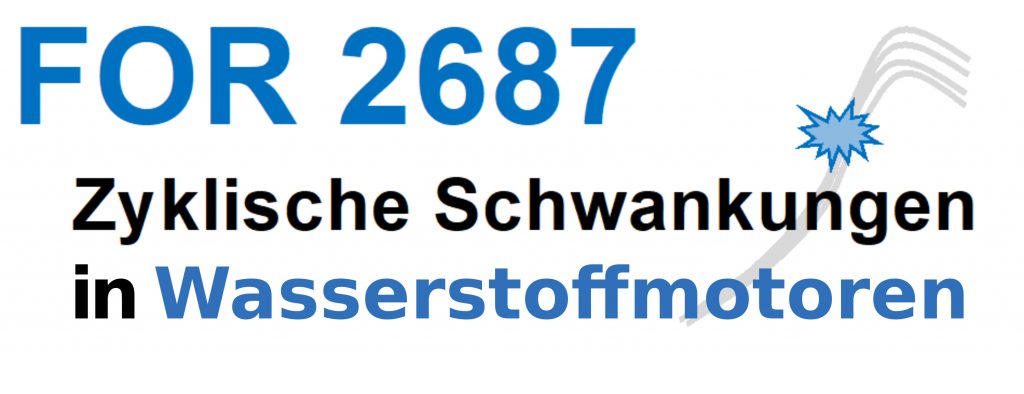Cyclic variations in highly optimized hydrogen-fueled spark-ignition engines: experiment and simulation of a multi-scale causal chain
The goal of the Research Unit FOR 2687 is to understand the cause-and-effect chain that leads to cyclic variations in highly optimized spark-ignition engines. In the first funding period, conventional gasoline-type fuels where investigated. The second funding period will exclusively consider hydrogen as a fuel. The very different physical-chemical properties of hydrogen require significant advances in the methods and models that were successfully developed in the first funding period. In spark-ignited engines, the cylinder pressure traces exhibit seemingly random variations from cycle to cycle, and thus characteristic metrics like peak pressure, heat release rate and mean effective pressure all vary. Combustion anomalies like misfire, pre-ignition and knocking also can be understood as extreme forms of cyclic variations. They are fundamental limitations for optimizing engine efficiency. The variations in the combustion result from the interaction of various extrinsic and intrinsic phenomena, whose connection in time and space is analyzed here in a cause-and-effect chain. The overarching goal of the FOR 2687 is to develop a better understanding, and through this better models and simulation methods, for this chain. Compared to the hydrocarbons considered thus far, hydrogen has very different physical-chemical properties. In particular, its flammability limits are extremely wide, the density and the minimum ignition energy are low, and premixed hydrogen flame have strong thermo-diffusive instabilities. These properties significantly impact the cause-and-effect chain leading to cyclic variations, which is to be investigated in the second funding period. To this end the Research Unit utilizes experiments and simulations. The former mainly are optical imaging diagnostics that capture phenomena like flow, hydrogen injection, mixing and combustion with high spatio-temporal resolution. The experiments are performed in optically accessible research engines and in a high-pressure cell. Large eddy simulation (LES) and direct numerical simulation (DNS) are used with suitable chosen and purpose-developed numerical schemes and models. This is augmented by lower-dimensional models. Based on the experimentally validated results, the causality of cyclic variations is traced back in time. For this, novel methods for analyzing partially coherent complex flows are developed. Energy process engineering is a research focus in all four locations of this Research Unit, RWTH Aachen, U. Duisburg-Essen, TU Darmstadt, and U. Stuttgart. The rich opportunities afforded by this to young scientists are complemented by a number of networking and professional-development events organized by the Research Unit that also actively supports efforts towards equal opportunities for all scientists.
